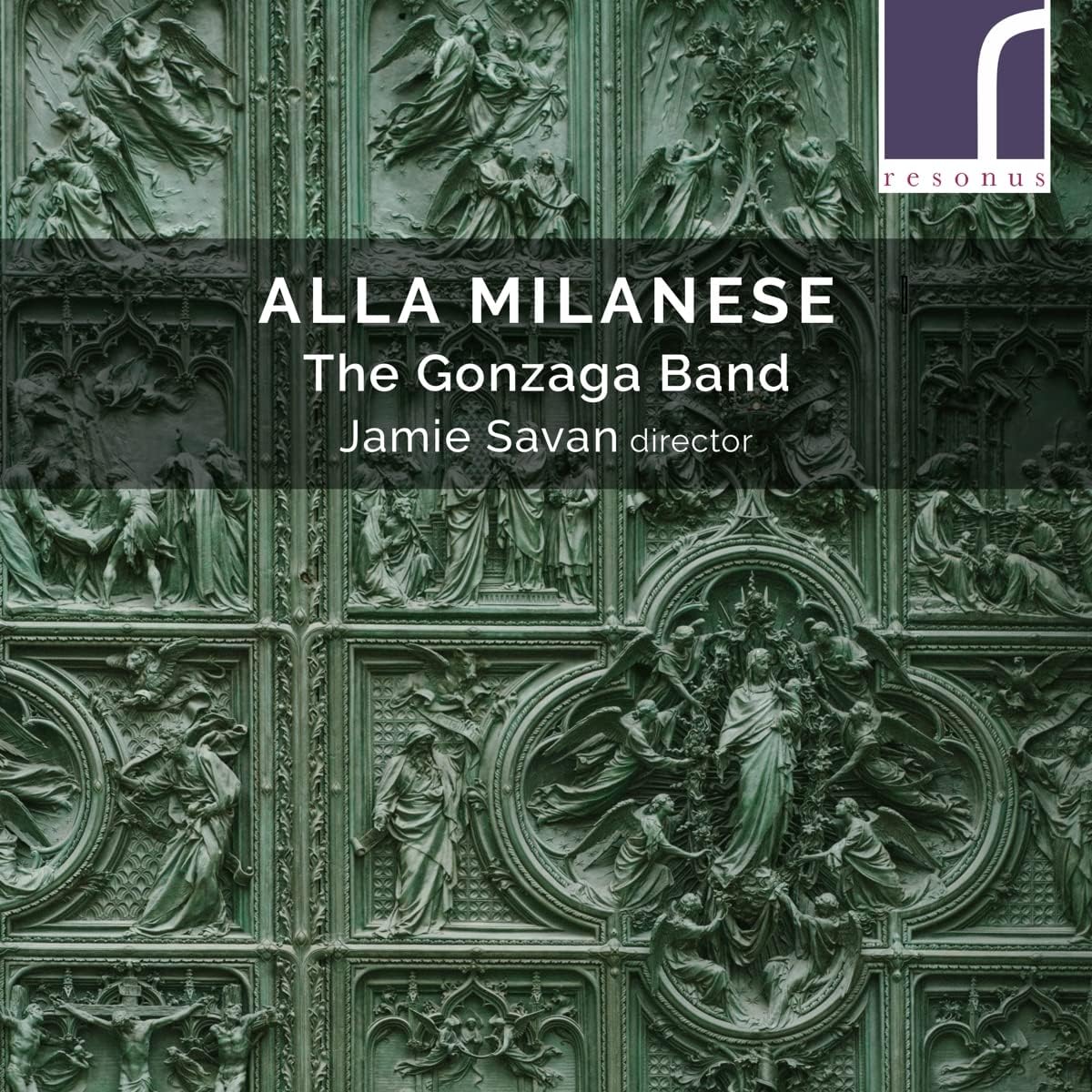The Gonzaga Band directed by Jamie Savan
74:19
Resonus RES 10314
The Gonzaga Band is small group of acclaimed experts who deliver music-making of extraordinary power, where the whole seems miraculously more than the sum of its parts.
Partly this is because their expertise is forged in bringing exactly this music – music written in the years when Renaissance polyphony was just bursting out of its ecclesiastical shell into a more florid, instrumental-driven freedom of divisions or passaggi as these techniques of ornamenting the four-square polyphonic writing were called – to life. It was this development – along with the development of instrument-making – especially in violin making – that would enable Corelli and Vivaldi and their associates to emerge into what we know as the high Baroque, and Milan was particularly important in the development of the violin and its music in this period.
But partly also it is because their leader, Jamie Savan, researches and prepares music for performance that is not only a pleasure to listen to, but which makes the links between Milan’s past and future as a distinctive player in the extraordinary flowering of the Nuova Musica along the Po valley from Lombardy to the Veneto. Savan’s liner notes are always a model of good practice: the sources are listed, along with the performing pitch (A=465Hz) and the temperament (1/4 comma mean tone); so are the instruments they all play, including the Hauptwerk organ sampled from S. Maria d’Alieto, Izola, Slovenia used by Steven Devine. I would love to hear them play with an organ by Walter Chinaglia based on open wooden principal pipes described in his Duoi organi per Monteverdi, https://www.organa.it/monteverdi/ for details.
Attention to balance and allowing space for sonorities to bloom is second nature to this group, and we should be grateful for a glimpse into such a wide variety of music. There is a good deal of the best-known Milanese composer of the time, Giovanni Paulo Cima, and his Capriccio 8, 1606 (track 12) will give you a good idea of the instrumental sonorities offered here. Particularly interesting to me as examples of how the earlier polyphonic masterworks were being transformed by passaggi are the tracks 6, 11 and 15 where music by Palestrina, Lassus and de Rore is re-presented with divisions: here Mark Caudle’s violone playing in Rognoni’s version of Lassus’ well known Susanne un jour is a star turn, as are Jamie Savan’s cornetto divisions in track 15. Towards the end, we hear two tracks by Caterina Assandra, a novice nun who was clearly a remarkable composer in her own right at a young age.
Faye Newton has a wonderfully clear yet expressive voice, negotiating the passaggi and trills with ease, she manages to convey the varying moods of the music without the aid of those modern singerly conventions like vibrato or unaccountable swelling on weak notes. This means she matches the instruments splendidly: Cima’s Surge propera (track 16) is a motet with echo effects on the cornetto, and Rognoni’s Ave Virgo Benedicta (track 17) lets us hear her unadorned. You would expect a degree of athleticism from the cornetto, but here you can hear it from the bass sackbut too in the skilled hands of Guy Morely (tracks 5 and 18). Oliver Webber whose relaxed technique is so well-suited to this period’s divisions is heard on his own in Canzon ‘la Porcia’ by Antonio Mortaro with divisions by Francesco Rognoni (track 7), where Steven Devine is playing a harpsichord by Colin Booth (1998) based on one by Domenico da Pesaro (Venice, 1533).
The whole CD is a treat, introducing us to a distinctive sound-world which helps us make sense of the rise in instrumental skills which preluded the shift from Canzone to Sonatas and Concerti, marking the distinctive Baroque period both instrumentally and vocally. I commend it wholeheartedly.
David Stancliffe
